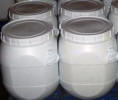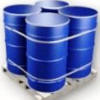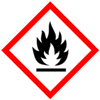| Anmol Chemicals is the pioneer manufacturers of Glacial Acetic Acid, Pharmaceutical Excipients Fragrance & Flavor chemicals in India. We supply Halal and Kosher Glacial Acetic Acid made in an ISO9001, ISO22000 (FSSC22000) and cGMP certified facility. Our group has several manufacturing facilities spread across the world, supported by toll manufacturers and representatives in UAE, Europe, Africa, USA, China and has several associated manufacturing facilities spread across India. All the Information on Physics, Chemistry, Applications, Uses and Technology on Manufacture of Glacial Acetic Acid is in these pages. |
| The units have one or more of the certifications like FDA GMP, ISO 9001, ISO 22000, HACCP, REACH, Kosher & Halal |





Glacial Acetic Acid SDS MSDS Sheet of Manufacturers
Glacial Acetic Acid Specifications of Manufacturers
Glacial Acetic Acid SDS GHS MSDS Sheet, Material Safety Data Sheet
Section 1 - Chemical Product and Company Identification
MSDS Name: Acetic Acid
CAS#: 64-19-7
EINECS EC Number: 200-580-7
Molecular Formula: CH3COOH
Molecular Weight: 60.05
Recommended usage: Industrial Manufacturing.
Suppliers: As per letterhead above.
Section 2 - Hazards Identification
GHS, Globally Harmonized System Classification in accordance with 29 CFR 1910
Classification according to Regulation (EC) No 1272/2008
Flammable liquids (Category 3) H227
Skin corrosion/irritation (Category 1A, B, C) H314
Acute aquatic toxicity (Category 3) H402
Labeling according to GHS & Regulation (EC) No 1272/2008
GHS Label Elements  Combustible Liquid |
GHS Label Elements |
Signal Words: Danger
Hazard statements:
H227: Combustible liquid.
H314: Causes severe skin burns and eye damage.
H402: Harmful to aquatic life.
Precautionary statements:
P210: Keep away from heat, sparks, open flames, hot surfaces. - No smoking.
P260: Do not breathe mist, vapors, spray.
P264: Wash exposed skin thoroughly after handling.
P280: Wear protective clothing, protective gloves, eye protection, face protection.
P301+P330+P331: IF SWALLOWED: rinse mouth. Do NOT induce vomiting.
P303+P361+P353: IF ON SKIN (or hair): Remove/Take off immediately all contaminated clothing. Rinse skin with water/shower.
P304+P340: IF INHALED: remove victim to fresh air and keep at rest in a position comfortable for breathing.
P305+P351+P338: If in eyes: Rinse cautiously with water for several minutes. Remove contact lenses, if present and easy to do. Continue rinsing.
P314: Get Medical advice/attention if you feel unwell.
P337+ P313: If eye irritation persists: Get medical advice/ attention.
P370+P378: In case of fire: Use carbon dioxide (CO2), powder, alcohol-resistant foam for extinction.
P403+P235: Store in a well-ventilated place. Keep cool.
P405: Store locked up.
P273: Avoid release to the environment.
P501: Dispose of contents/container to comply with local, state and federal regulations.
Section 3 - Composition/Information on Ingredients
Chemical Name: Acetic Acid
CAS#: 64-19-7
Section 4 - First Aid Measures
Always consult a physician after the first aid is given.
Eyes: Immediately flush eyes with plenty of water for at least 15 minutes, occasionally lifting the upper and lower eyelids. Get medical aid. Do NOT allow victim to rub or keep eyes closed.
Skin: Flush skin with plenty of soap and water for at least 15 minutes while removing contaminated clothing and shoes. Get medical aid if irritation develops or persists. Wash clothing before reuse.
Ingestion: Do NOT induce vomiting. If victim is conscious and alert, give 2-4 cupfuls of milk or water. Never give anything by mouth to an unconscious person. Get medical aid.
Inhalation: Remove from exposure to fresh air immediately. If breathing is difficult, give oxygen. Get medical aid. Do NOT use mouth-to-mouth resuscitation. If breathing has ceased apply artificial respiration using oxygen and a suitable mechanical device such as a bag and a mask.
Section 5 - Fire Fighting Measures
General Information: As in any fire, wear a self-contained breathing apparatus in pressure-demand, MSHA/NIOSH (approved or equivalent), and full protective gear. During a fire, irritating and highly toxic gases may be generated by thermal decomposition or combustion.
Flammability: Flammable. Explosive in presence of oxidizing materials.
Flash Point: 40C 104F
Auto Ignition Temperature: 463C 865F
Extinguishing Media: Use DRY chemical powder, alcohol foam, water spray or fog. Cool containing vessels with water jet in order to prevent pressure build-up, auto-ignition or explosion.
Section 6 - Accidental Release Measures
Spills/Leaks: Use proper personal protective equipment. Restrict unprotected personnel from the area. Remove all ignition sources and ventilate area. Contain the spill with sand or other inert absorbent material, neutralize with sodium bicarbonate or calcium hydroxide, and deposit in a sealed bag or container. Use water spray to dilute spill to a non-flammable mixture. Avoid runoff into storm sewers and ditches which lead to waterways. Wash area with soap and water. Use water spray to disperse the gas/vapor. Remove all sources of ignition. Use a spark-proof tool. Provide ventilation. Cover with material such as dry soda ash or calcium carbonate and place into a closed container for disposal.
Section 7 - Handling and Storage
Handling: Wash thoroughly after handling. Use with adequate ventilation. Avoid contact with eyes, skin, and clothing. Keep container of Acetic acid tightly closed. Avoid ingestion and inhalation. Do not allow contact with heat. Do not breathe vapors or spray mist.
Storage: Store Acetic acid in a tightly closed container. Store in a cool, dry, well-ventilated area away from incompatible substances. Store Acetic acid protected from heat and flames.
Section 8 - Exposure Controls, Personal Protection
Airborne Exposure Limits: Airborne Exposure Limits:
OSHA Permissible Exposure Limit (PEL): 10 ppm (TWA).
ACGIH Threshold Limit Value (TLV): 10 ppm (TWA); 15 ppm (STEL).
NIOSH 10ppm TWA; 25 mg/m3 TWA 50ppm IDLH
Ventilation System: A system of local and/or general exhaust is recommended to keep employee exposures as low as possible. Local exhaust ventilation is generally preferred because it can control the emissions of the contaminant at its source, preventing dispersion of it into the general work area. Please refer to the ACGIH document, Industrial Ventilation, A Manual of Recommended Practices, most recent edition, for details.
Personal Respirators (NIOSH Approved): For conditions of use where exposure to dust or mist is apparent and engineering controls are not feasible, a particulate respirator (NIOSH type N95 or better filters) may be worn. If oil particles (e.g. lubricants, cutting fluids, glycerin, etc.) are present, use a NIOSH type R or P filter. For emergencies or instances where the exposure levels are not known, use a full-face positive-pressure, air-supplied respirator. WARNING: Air-purifying respirators do not protect workers in oxygen-deficient atmospheres.
Skin Protection: Wear impervious protective clothing, including boots, gloves, lab coat, apron or coveralls, as appropriate, to prevent skin contact.
Eye Protection: Use chemical safety goggles and/or full face shield where dusting or splashing of solutions is possible. Maintain eye wash fountain and quick-drench facilities in work area of Acetic acid.
Section 9 - Physical and Chemical Properties
Appearance: Clear Liquid
Odor: Vinegar odor
Solubility: Soluble in water
Specific Gravity: 1.049
pH: 2 for 1% solution, 2.4 (1.0M solution)
% Volatiles by volume @ 21C (70F): NA
Boiling Point: 118C (244.5°F)
Melting Point: 16.6C (61.9°F)
Molecular Formula:C2H4O2
Molecular Weight:60.05
Section 10 - Stability and Reactivity
Chemical Stability: Acetic acid is stable under normal temperatures and pressures. It is hygroscopic.
Conditions to Avoid: Incompatible materials, dust generation, moisture, exposure to heat, spark, moist air or water.
Incompatibilities with Other Materials: Oxidizing agents, strong alkalis and metals.
Hazardous Decomposition Products: Carbon monoxide, irritating and toxic fumes and gases, carbon dioxide.
Hazardous Polymerization: Will not occur.
Section 11 - Toxicological Information
Acute oral toxicity (LD50): 3310 mg/kg [Rat].
Acute dermal toxicity (LD50): 1060 mg/kg [Rabbit].
Acute toxicity of the vapor (LC50): 5620 1 hours [Mouse].
LC50 Inhalation - rat - 4 h - 11.4 mg/l 4 hours
The material is not reported as a carcinogen.
Section 12 - Ecological Information
Environmental Fate: The material will readily biodegrade.
Environmental Toxicity: (LC50): 423 mg/l 24 hours [Fish (Goldfish)]. 88 ppm 96 hours [Fish (fathead minnow)]. 75 ppm 96 hours [Fish (bluegill sunfish)]. >100 ppm - 96 hours [Daphnia].
Section 13 - Disposal Considerations
Whatever cannot be saved for recovery or recycling should be managed in an appropriate and approved waste disposal facility. Processing, use or contamination of this product may change the waste management options. State and local disposal regulations may differ from federal disposal regulations. Dispose of container of Acetic acid and unused contents in accordance with local requirements.
Section 14 - Transport Information
DOT (US) and ADR/RID
UN number: 2789
Class: 8 (3)
Packing group: II
Proper shipping name: Acetic acid, glacial
Reportable Quantity (RQ): 5000 lbs
Marine pollutant: No
Poison Inhalation Hazard: No
IMDG
UN number: 2789
Class: 8 (3)
Packing group: II
Proper shipping name: Acetic acid, glacial
Reportable Quantity (RQ): 5000 lbs
Marine pollutant: No
IATA
UN number: 2789
Class: 8 (3)
Packing group: II
Proper shipping name: Acetic acid, glacial
Section 15 - Regulatory Information
USA:
SARA Section 302 (RQ): CAS# 64-19-7: final RQ = 5000 pounds (2270 kg)
Section 302 (TPQ): None of the chemicals in this product have a TPQ.
Section 313: No chemicals are reportable under Section 313.
SARA 311/312 Hazards: Acute Health Hazard, Chronic Health Hazard
Clean Air Act: This material does not contain any hazardous air pollutants. This material does not contain any Class 1 Ozone depletors. This material does not contain any Class 2 Ozone depletors.
Clean Water Act: CAS# 64-19-7 is listed as a Hazardous Substance under the CWA. None of the chemicals in this product are listed as Priority Pollutants under the CWA. None of the chemicals in this product are listed as Toxic Pollutants under the CWA.
California Prop. 65 Components: This product does not contain any chemicals known to State of California to cause cancer, birth defects, or any other reproductive harm.
Section 16 - Additional Information
Disclaimer:******************************
Our company provides this MSDS sheet in good faith but makes no representation as to its comprehensiveness or accuracy. This SDS sheet is intended only as a guide to the appropriate precautionary handling of the material by a properly trained person using this product. The above information has been compiled from various sources and has the possibility of discrepancy and being out-dated information. Individuals receiving the information must exercise their independent judgment and do further search in determining its appropriateness for a particular purpose. In no case shall our company be liable to loss or damages by the product user.
******************************
Manufacturers
Anmol Chemicals
S-8, SARIFA MANSION, 2ND FLANK ROAD, CHINCHBUNDER, MUMBAI 400009, INDIA
TEL: (OFFICE) 91-22-23770100, 23726950, 23774610, 23723564. FAX: 91-22-23728264
e-mail: anmolc@mtnl.net.in

Exports to USA, Canada, UAE, Dubai, South Africa, Tanzania, Kenya, Nigeria, Egypt, Uganda, Turkey, Mexico, Brazil, Chile, Argentina, Europe Netherlands, Italy, Spain, Germany, Portugal, France, Malaysia, Indonesia, Thailand, Korea, Vietnam, Japan, etc.
Copyright and Usual Disclaimer is Applicable. 26 December, 2021
Barter
They who love thee on this earth, keep calling on thee and chanting thy beads
Lest thou forgetest.
They assign the credit of their hard work to your blessings
They keep you amused.
They come to thy temple with baskets of fruits, as if you were a glutton
They deny the same to their children.
They offer you milk for a bath and burn the ghee
They hardly understand the meaning of it.
They bring gold and diamonds. They come with beating of drums
They love to advertise their offerings.
They offer you a small bribe as advance for booty, called lottery
They love to dream.
I do not bow down at your door
I do not bargain for booty
Your promise of the heaven does not lure me
Your hell-fire does not scare me
I do not even know the proper method of prayer
I do not offer any thing to you
Ages have gone by and I have not seen you my lord
Yet my love for you keeps waiting for you
